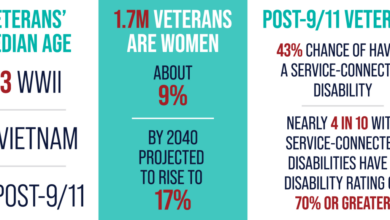
VA Oracle Cerner EHR Modernization Contract
VA Oracle Cerner EHR modernization contract: A massive undertaking, this project aims to overhaul the Department of Veterans Affairs’ electronic health record system. It’s a complex story involving billions of dollars, technological hurdles, and ultimately, the impact on the care received by millions of veterans. This post dives into the details, exploring the contract’s intricacies, implementation challenges, and the long-term implications for veteran healthcare.
From the initial contract signing to the ongoing implementation, this project has been a rollercoaster. We’ll examine the technological challenges, the logistical nightmares of data migration and staff training, and the potential for both positive and negative impacts on veterans’ access to quality care. We’ll also analyze the cost-benefit analysis and explore the future of this crucial system.
Contract Overview

Source: qtxasset.com
The VA Oracle Cerner EHR modernization contract represents a massive undertaking, aiming to standardize and improve electronic health record (EHR) systems across the Department of Veterans Affairs (VA) healthcare system. This contract, while complex, fundamentally aims to enhance patient care through improved data accessibility, interoperability, and streamlined workflows. Understanding its key terms and conditions is crucial for assessing its impact on veterans and the healthcare landscape.
Key Terms and Conditions
The contract Artikels numerous stipulations, including performance metrics, data security provisions, and dispute resolution mechanisms. Specific details are subject to non-disclosure agreements, but generally, the contract emphasizes stringent requirements for system performance, data privacy and security (meeting HIPAA and VA regulations), and the successful migration of patient data. Penalties for non-compliance are substantial, reflecting the high stakes involved in managing sensitive patient information.
The contract also specifies procedures for contract modifications and extensions, anticipating the need for adjustments throughout the lengthy implementation process.
Scope of Work
The scope of work is incredibly broad, encompassing the implementation of Cerner’s Millennium EHR system across all VA medical facilities. This includes not only the software installation and configuration but also extensive training for VA staff, data migration from legacy systems, ongoing system maintenance and support, and integration with other VA systems. The project’s complexity is underscored by the sheer number of VA facilities and the diverse range of healthcare services they provide.
The contract explicitly addresses the need for a phased rollout to mitigate risks and ensure a smooth transition.
Major Milestones and Deadlines
The contract establishes a series of critical milestones and deadlines, including completion of system testing at pilot sites, the commencement of full-scale deployment at various VA facilities, and the final completion of the nationwide rollout. These milestones are often tied to specific payment tranches, creating incentives for timely progress. Missing deadlines can result in financial penalties and potential contract termination.
While precise dates are confidential, the overall timeline spans several years, reflecting the scale of this transformative project. For example, initial phases might focus on specific regions or types of facilities before broader deployment.
Financial Aspects of the Contract
The total cost of the contract is substantial, amounting to billions of dollars over its lifespan. Payment is structured in phases, often tied to the achievement of predetermined milestones. This payment schedule incentivizes Oracle Cerner to meet its contractual obligations and provides the VA with a degree of financial control. The contract likely includes provisions for cost overruns and change orders, acknowledging the inherent uncertainties associated with such a large-scale IT project.
Specific financial details, however, remain largely confidential.
Summary of Key Contract Details
| Aspect | Description | Timeline | Financial Implications |
|---|---|---|---|
| Scope | Nationwide EHR modernization across all VA facilities. | Multiple years, phased rollout. | Billions of dollars, phased payments. |
| Milestones | Pilot site testing, full-scale deployment, nationwide completion. | Specific dates confidential, but tied to payment releases. | Payments contingent upon milestone achievement. |
| Key Terms | Performance metrics, data security, dispute resolution. | Throughout contract duration. | Penalties for non-compliance, incentives for success. |
| Payment Schedule | Phased payments tied to milestone completion. | Aligned with project milestones. | Significant financial commitment, potential for cost overruns. |
Implementation Challenges
The Oracle Cerner EHR modernization contract, while promising streamlined healthcare processes, presented a complex tapestry of technological, integration, and logistical hurdles. Successfully navigating these challenges required meticulous planning, adaptable strategies, and a robust commitment to overcoming unforeseen obstacles. The following sections detail some of the key difficulties encountered during the implementation.
Technological Challenges
The sheer scale of the technological undertaking was a significant challenge. We were dealing with the integration of a vast, legacy system with cutting-edge technology. This involved migrating enormous quantities of patient data, ensuring data integrity throughout the process, and adapting existing workflows to accommodate the new system’s functionalities. Specific technological hurdles included ensuring compatibility between different software versions and hardware platforms, managing data security and compliance throughout the migration, and addressing potential system downtime during the transition.
The complexity of the system also meant a steep learning curve for IT staff, requiring extensive training and support. For instance, the initial deployment faced unexpected delays due to incompatibility issues with a specific network component, requiring a complete re-evaluation and redesign of the network infrastructure. This resulted in a three-week delay and significant budget adjustments.
Integration Complexities
Merging disparate healthcare systems presented immense integration complexities. Different systems often employed varying data formats, terminologies, and security protocols. Reconciling these differences required extensive data mapping and transformation efforts. Moreover, ensuring seamless interoperability between the new Cerner system and existing ancillary systems, such as billing and scheduling software, was crucial. A failure to achieve seamless integration could lead to data silos, workflow disruptions, and potentially compromised patient care.
For example, the initial attempt to integrate the pharmacy system resulted in significant data discrepancies, requiring a dedicated team to manually reconcile the data for several weeks. This highlighted the need for more rigorous testing and validation procedures during the integration phase.
Logistical Hurdles in Staff Training and Data Migration
Training staff on the new EHR system was a substantial logistical undertaking. Comprehensive training programs were essential to ensure staff proficiency and adoption. This involved developing tailored training materials, scheduling training sessions, and providing ongoing support to address user queries and resolve technical issues. Similarly, data migration presented its own set of logistical challenges. The volume of data involved required careful planning, robust data validation procedures, and meticulous quality control measures to prevent data loss or corruption.
One example of a logistical hurdle was the unexpected need to update several peripheral systems to accommodate the new data format, which was not fully anticipated during the initial planning phases. This resulted in an additional month of project delay.
Impact on Veterans’ Care
The Oracle Cerner EHR modernization contract promises significant changes to the way veteran healthcare is delivered. While the transition presents challenges, the potential benefits for veterans are substantial, impacting everything from appointment scheduling to the overall quality and safety of their care. This section explores the anticipated effects of this modernization on various aspects of veteran healthcare.
Improved Quality of Veteran Healthcare
The modernized EHR system aims to enhance the quality of veteran healthcare through improved access to comprehensive patient data. Clinicians will have a unified view of a veteran’s medical history, regardless of where they received care within the VA system. This holistic perspective should lead to more informed decisions, better treatment plans, and ultimately, improved health outcomes. For example, a veteran with a history of heart conditions treated at multiple VA facilities will now have their complete medical record readily available to all their care providers, minimizing the risk of medication errors or missed diagnoses.
This system should also facilitate the implementation of evidence-based guidelines and best practices across all VA facilities, leading to more consistent and effective care.
Patient Access to Care and Appointment Scheduling
The new system is designed to improve patient access to care and streamline the appointment scheduling process. Online portals will offer veterans greater control over their healthcare, allowing them to schedule appointments, request prescription refills, and access their medical records conveniently. This increased accessibility should reduce wait times and improve overall patient satisfaction. The system’s improved scheduling capabilities will also help optimize clinic workflows, reducing appointment delays and ensuring veterans are seen by the appropriate specialists in a timely manner.
Imagine a scenario where a veteran can easily book an appointment with a specialist online, eliminating the need for multiple phone calls and potential delays.
Enhanced Data Sharing and Coordination of Care
One of the key advantages of the modernized EHR is its enhanced capacity for data sharing and coordination of care. The system will facilitate seamless communication between different VA healthcare providers, ensuring that all clinicians have access to the most up-to-date information about a veteran’s health. This improved interoperability should lead to better coordinated care, reducing the risk of duplicated tests or conflicting treatments.
The VA’s Oracle Cerner EHR modernization contract has been a bumpy ride, to say the least. The implications of this massive undertaking are huge, especially considering recent news like rfk jr confirmed hhs secretary robert f kennedy jr , which could significantly impact healthcare policy and, consequently, the future direction of the VA’s EHR system. It’ll be interesting to see how his potential leadership affects the ongoing challenges and future implementations of the Cerner system.
For instance, if a veteran is treated at both a VA hospital and a community clinic, their records will be readily available to all providers involved, avoiding potential miscommunication or treatment overlaps.
Improved Patient Safety and Reduced Medical Errors
The new EHR system incorporates features designed to improve patient safety and reduce medical errors. Clinical decision support tools will alert clinicians to potential drug interactions or contraindications, minimizing the risk of adverse events. Automated alerts and reminders will also help ensure that veterans receive necessary preventative care and follow-up appointments. By providing clinicians with real-time access to relevant information and integrated safety checks, the system aims to significantly reduce the incidence of preventable medical errors.
A clear example would be an alert system preventing the prescription of a medication known to interact negatively with another medication already prescribed to the veteran.
Impact on Veteran Care: Positive and Negative Aspects
| Positive Impacts | Negative Impacts |
|---|---|
| Improved access to comprehensive patient data for clinicians | Initial learning curve for clinicians and staff |
| Enhanced patient access to care and appointment scheduling through online portals | Potential for system downtime or technical glitches |
| Seamless data sharing and improved coordination of care among providers | Concerns about data security and privacy |
| Reduced medical errors and improved patient safety through clinical decision support tools | Resistance to change among some healthcare professionals |
| More efficient workflows and optimized resource allocation | Potential for increased workload during the transition phase |
Cost-Benefit Analysis: VA Oracle Cerner EHR Modernization Contract
The Oracle Cerner EHR modernization project for the VA represents a significant investment, but one projected to yield substantial long-term returns. A thorough cost-benefit analysis is crucial to justify the expenditure and demonstrate its value to taxpayers and veterans. This analysis considers both the upfront costs and the ongoing operational expenses, weighing them against projected savings in operational efficiency, reduced medical errors, and improved patient outcomes.
Projected Costs
The total cost of the VA’s EHR modernization is a complex figure, encompassing software licensing, hardware infrastructure upgrades, extensive staff training, data migration, ongoing maintenance, and system support. Initial estimates placed the total cost in the billions of dollars, but these figures are subject to revision as the project evolves. Major cost components include: the initial purchase and implementation of the Cerner Millennium system; the development and deployment of interfaces to connect with existing VA systems; the extensive training required for all VA staff to use the new system; and the ongoing costs of system maintenance, updates, and technical support.
These costs are spread over several years, with a significant upfront investment followed by smaller, recurring expenses. Comparable projects in other large healthcare systems have shown similar cost profiles, with initial implementation costs being the largest component. For example, the implementation of Epic Systems at large hospital networks has demonstrated similar high initial costs followed by a decrease in annual costs due to increased efficiencies.
The VA’s Oracle Cerner EHR modernization contract continues to be a hot topic, raising concerns about cost overruns and implementation challenges. This massive undertaking highlights the financial risks involved in large-scale healthcare IT projects, especially considering recent news like Steward Health Care securing financing to avoid bankruptcy, as reported here: steward health care secures financing bankruptcy. The Steward situation underscores the importance of robust financial planning and risk mitigation in any major healthcare IT initiative, something the VA should carefully consider moving forward with their Cerner implementation.
Projected Long-Term Cost Savings
The long-term benefits of the EHR modernization are expected to significantly outweigh the initial investment. Improved efficiency through streamlined workflows, reduced administrative burden, and enhanced data accessibility will lead to cost savings. Reduced medical errors, improved care coordination, and decreased medication errors are projected to translate into substantial financial benefits. For instance, a reduction in hospital readmissions alone could yield millions of dollars in savings annually.
The improved quality of care should also lead to a reduction in malpractice claims and associated legal costs. Furthermore, better data analytics capabilities can lead to more effective resource allocation and improved decision-making, further contributing to cost savings. Specific cost savings will depend on the successful implementation and adoption of the system, as well as the ability of the VA to effectively utilize the new system’s capabilities.
Comparison to Similar Projects, VA Oracle Cerner EHR modernization contract
Several large healthcare systems have undertaken similar EHR modernization projects, offering valuable insights into cost and benefit projections. Comparing the VA’s project to these initiatives allows for a more realistic assessment of potential outcomes. While the scale of the VA’s project is significantly larger than most, the cost per patient or per provider can be compared to provide a benchmark.
Analyzing the experiences of other organizations, including their challenges and successes, allows for better risk management and improved planning for the VA’s project. For example, examining the implementation timelines and cost overruns of similar projects in other large healthcare systems can help to refine the VA’s project timeline and budget.
Return on Investment (ROI) Calculation
Calculating the ROI for the VA’s EHR modernization project requires a long-term perspective. The initial investment will be substantial, but the anticipated long-term cost savings and improvements in patient care will gradually increase over time. A typical ROI calculation would involve comparing the total cost of the project (including both initial and ongoing expenses) to the projected cost savings and revenue enhancements over a defined period, typically 5-10 years.
The formula for ROI is:
ROI = (Net Profit / Cost of Investment) x 100
The net profit is the difference between the total cost savings and the total project cost. Accurate ROI prediction depends on the accurate estimation of cost savings, which relies heavily on the successful implementation and adoption of the new system.
Visual Representation of Cost-Benefit Analysis
A line graph would effectively illustrate the cost-benefit analysis over time. The x-axis would represent time (years), and the y-axis would represent dollars (in millions or billions). Two lines would be plotted: one representing the cumulative project costs, starting high initially and gradually leveling off; and another representing the cumulative cost savings, starting low and gradually increasing, eventually surpassing the cumulative costs.
The point where the cost savings line intersects and surpasses the cumulative cost line visually represents the break-even point, demonstrating when the project begins to generate a positive return on investment. A shaded area between the two lines would highlight the net cost or net savings at any given point in time. The graph would clearly show the initial investment phase, the period of net cost, and finally, the period of positive return on investment.
The graph’s title could be “VA EHR Modernization: Cumulative Costs vs. Cumulative Savings.” The legend would clearly label the “Cumulative Costs” and “Cumulative Savings” lines.
Future Implications
The VA Oracle Cerner EHR modernization contract, while a significant undertaking with immediate challenges, holds profound long-term implications for the entire Veterans Health Administration (VHA) system. Its success hinges not only on timely implementation but also on a proactive approach to future upgrades, expansion, and the mitigation of potential unforeseen obstacles. The ultimate impact will be felt in the quality and accessibility of veteran healthcare for years to come.The successful integration of Cerner’s EHR system will lay the groundwork for a more connected and efficient healthcare delivery system.
The VA’s Oracle Cerner EHR modernization contract is a massive undertaking, aiming to improve healthcare delivery. However, the project’s success hinges on factors beyond just the software itself; understanding the complexities of health cost inflation, as highlighted in this insightful article on health cost inflation variation price transparency turquoise , is crucial. Ultimately, effective cost management will be key to the long-term viability of the VA’s Cerner implementation.
This foundation will allow the VA to leverage technological advancements in the coming years.
Potential for Future Upgrades and Expansions
The Cerner system’s modular design allows for continuous upgrades and expansion. Future upgrades could include integrating advanced analytics capabilities for predictive modeling of patient needs, enhancing telehealth functionalities to improve remote patient monitoring and access to care, and incorporating artificial intelligence (AI) for improved diagnostics and treatment recommendations. For example, the system could be expanded to incorporate personalized medicine approaches, tailoring treatments based on a veteran’s unique genetic profile and health history.
This would require ongoing investment in software updates, training, and infrastructure, but the potential benefits for improved patient outcomes are substantial. We can anticipate that the initial implementation will be followed by several phases of enhancements, each building upon the previous one, mirroring the phased rollout of the system itself.
Future Challenges and Mitigation Strategies
Several challenges could arise in the future. Maintaining data security and privacy in an increasingly sophisticated cyber threat landscape will be paramount. The VA will need to invest heavily in robust cybersecurity measures, including regular security audits, employee training, and advanced threat detection systems. Another challenge lies in the ongoing need for staff training and support. As the system evolves, ongoing training programs will be crucial to ensure that healthcare professionals can effectively utilize all its features.
This necessitates a robust and continuous professional development program for all VHA staff. Furthermore, interoperability with other healthcare systems, both within the VA and with external providers, needs careful management to avoid data silos and ensure seamless patient care transitions. This requires strong collaboration and standardization efforts with other healthcare organizations.
Future Impact on Veteran Healthcare Access and Quality
The long-term impact on veteran healthcare access and quality is predicted to be positive, though not without its hurdles. Improved interoperability should lead to a more streamlined exchange of patient information, reducing delays and improving care coordination. Enhanced telehealth capabilities should expand access to care for veterans in rural or underserved areas. The availability of advanced analytics could lead to earlier identification of at-risk patients, enabling proactive interventions to prevent hospitalizations and improve outcomes.
However, successful realization of these benefits hinges on effective change management, adequate funding, and a continuous focus on user training and support. For example, we can anticipate a reduction in medical errors due to improved data accessibility and clinical decision support tools within the system. Similar improvements have been observed in other healthcare systems that have successfully implemented comprehensive EHR systems.
The success of the VA’s Cerner EHR modernization hinges on a proactive and adaptable approach to future challenges and opportunities.
Improved data analytics could lead to significant advancements in preventative care and personalized medicine for veterans.
Ongoing investment in staff training and cybersecurity will be critical to the long-term success of the system.
Closure

Source: hitconsultant.net
The VA Oracle Cerner EHR modernization contract represents a monumental effort to improve veteran healthcare. While challenges remain, the potential for enhanced care coordination, improved patient safety, and streamlined access to services is significant. The long-term success of this project hinges on continued collaboration, effective problem-solving, and a steadfast commitment to putting veterans’ needs first. It’s a story that’s still unfolding, and its impact will be felt for years to come.
Question & Answer Hub
What are the biggest risks associated with this project?
Significant risks include data loss during migration, system downtime impacting patient care, and insufficient staff training leading to errors. Integration complexities with existing VA systems also pose a major challenge.
How will the new system improve patient safety?
Improved data sharing and interoperability should reduce medical errors through better access to complete patient histories and reduced reliance on fragmented information.
What is the timeline for full implementation?
The original timeline was ambitious and has been revised multiple times due to unforeseen challenges. A definitive completion date remains uncertain.
How is the project funded?
The project is funded through a combination of government appropriations and potentially cost savings realized through improved efficiency in the long term.





